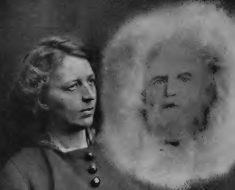History remembers Nostradamus and his predictions well, but lesser known is his English counterpart, Mother Shipton. The Yorkshire seer was born in a cave in 1488 as Ursula Soothtell (or Southeil) and was known for her grotesque appearance before she gained fame for her foresight.
As described in 1686’s The Strange and Wonderful History of Mother Shipton, little Ursula’s body “was long, but very big-bon’d, great Gogling eyes, very sharp and fiery, a Nose of unproportionable length, having in it many crooks and turnings, adorned with great Pimples, which like vapors of brimstone gave such a lustre in the night, that her Nurse needed no other Candle to dress her by.”
With looks like that and the power to see the future, it’s no wonder she became known as the Witch of York.
As a young girl, she heard other names as well, like “the Devil’s Bastard”, “Devil’s daughter,” and “Hag-Face.” Yet, those who dared to insult her may have gotten a taste of Ursula’s developing powers. According to an article from 1911, she was said to have had “a peculiar power over her school fellows, and ability to pull their hair, pinch them and throw them to the ground without being near them.”
By the age of 24, despite her pimpled nose and “hag face,” Ursula married a carpenter named John Shipton. From then on, she became known as “Mother” Shipton. Her gifts gained fame gradually, starting with local triumphs, such as helping a neighbor find a thief and giving women “advice in matters of the heart.”
Later she predicted the death of Cardinal Wolsey in 1530. Mother Shipton soon solidified her status as England’s greatest soothsayer. She went on to allegedly predict other events, such as the English Civil War in the mid 1600s, Oliver Cromwell’s rise to power, and the Restoration of the monarchy:
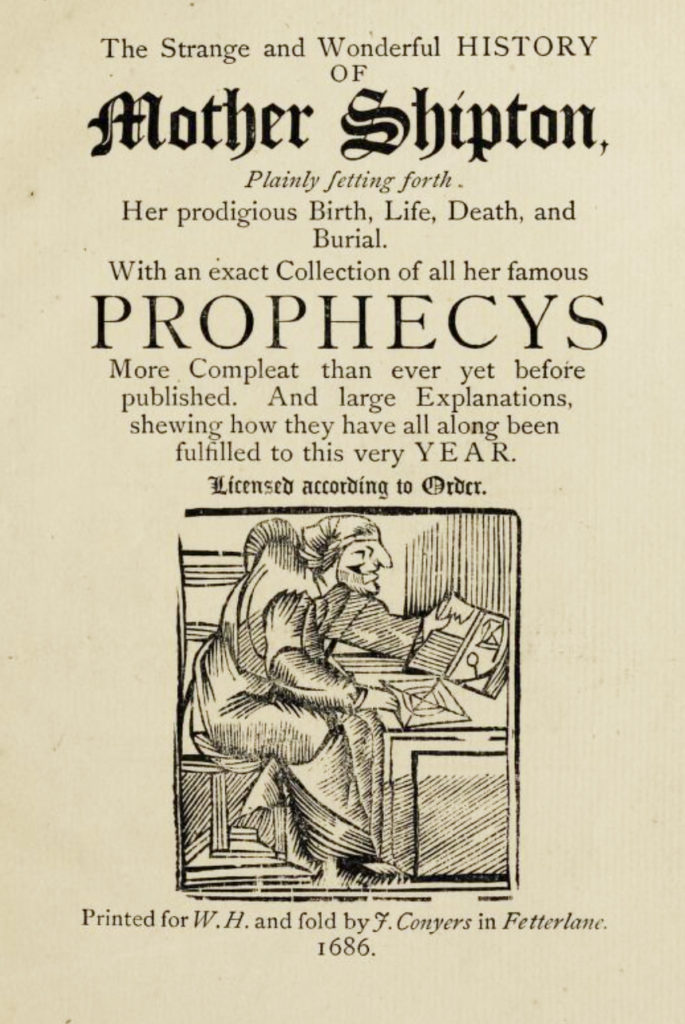
Title page from 1870’s “The Strange and Wonderful History of Mother Shipton” (reprinted from 1686).
“Forth from the North shall mischief blow,
And English Hob shall add thereto;
Mars shall rage as he were wood,
And Earth shall drunken be with Blood.
But tell’s what’s next, Oh cruel fate!
A King made Martyr at his gate.
The just Kind dead, the Woolfe shall then
With Blood usurp the Lyons Den.
But death shall hurry him away,
Confusion shall a while bear sway,
Till fate to England shall restore
A King to Reign as heretofore;
Who mercy and justice likewise
Shall in his Empire exercise.”
Following those events, she foresaw the Great Fire of London in 1666:
“A time shall happen, when a Ship shall come sailing up the Thames, till it come against London, and the Master of the Ship shall weep, and the Mariners of the Ship shall ask him, Why he weeps, since he hath made so good a Voyage? And he shall say, Ah! what a goodly City this was, none in the World comparable to it, and now there is scarce left an house, that can let us have drink for our Money.”
Other prophecies included the rise of Queen Elizabeth and her reign, the death of Mary Queen of Scots, various wars, the gunpowder plot, the reign of James I, the automobile, the telegraph, iron ships, steam engine, tunnels under water, and aviation.
At least, these are the stories that have been told over the centuries. Mother Shipton may, however, be more legend than legendary. At least some of her prophecies were admitted as hoaxes in 1873 by Charles Hindley, a publisher who in 1862 reprinted a 17th-century book on Shipton.
Hindley took a few liberties in his version by adding lines about things that had already come to pass. For example:
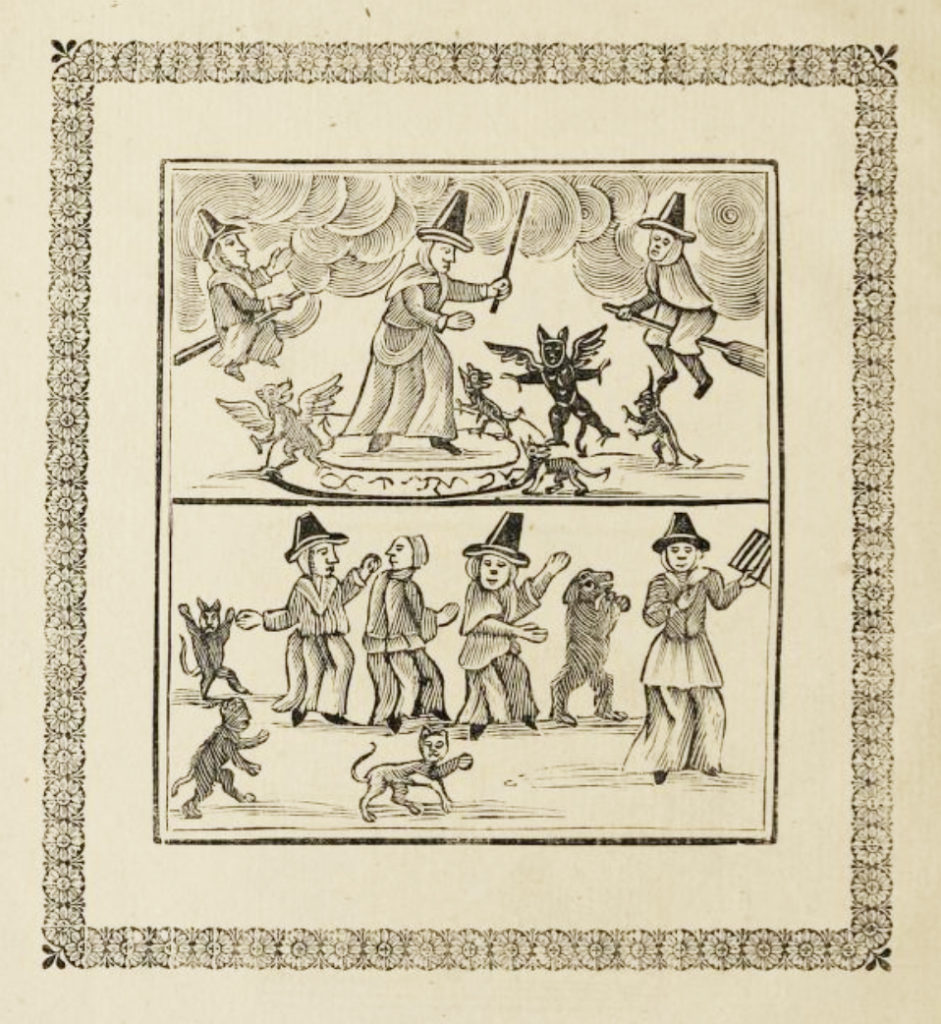
Mother Shipton, the prophetess, in action.
“Under water men shall walk,
Shall ride, shall sleep, shall talk.
In the air men shall be seen,
In white, in black, in green.”
But by the time of his publication, as a 1919 article notes, “aeronautics had reached a primitive stage of development half a century before Hindley wrote, and no fewer than fourteen submarines had been patented in England prior to 1727.”
The prankster also added a few near-future events that caused Shipton believers to panic, like the people of Somerset, England, who were convinced an earthquake and flood would destroy their homes in 1879. Hundreds of families abandoned their homes in fear. Despite the fact that Somerset was not destroyed, people were fooled once again just two years later, believing Shipton had foreseen the end of the world:
“And this world to an end shall come
In eighteen hundred and eighty-one.”
Thousands across England and other countries were convinced they were doomed. As for the predictions that occurred during Shipton’s lifetime (which lasted till 1561), no evidence exists to support any of them as true. Yet, whoever Mother Shipton was—witch, soothsayer, Devil’s daughter, or just a woman with odd features—she’s carved her place in the weird annals of history and serves as a reminder of humanity’s timeless desire to believe and our ability to find truth in prophecies.

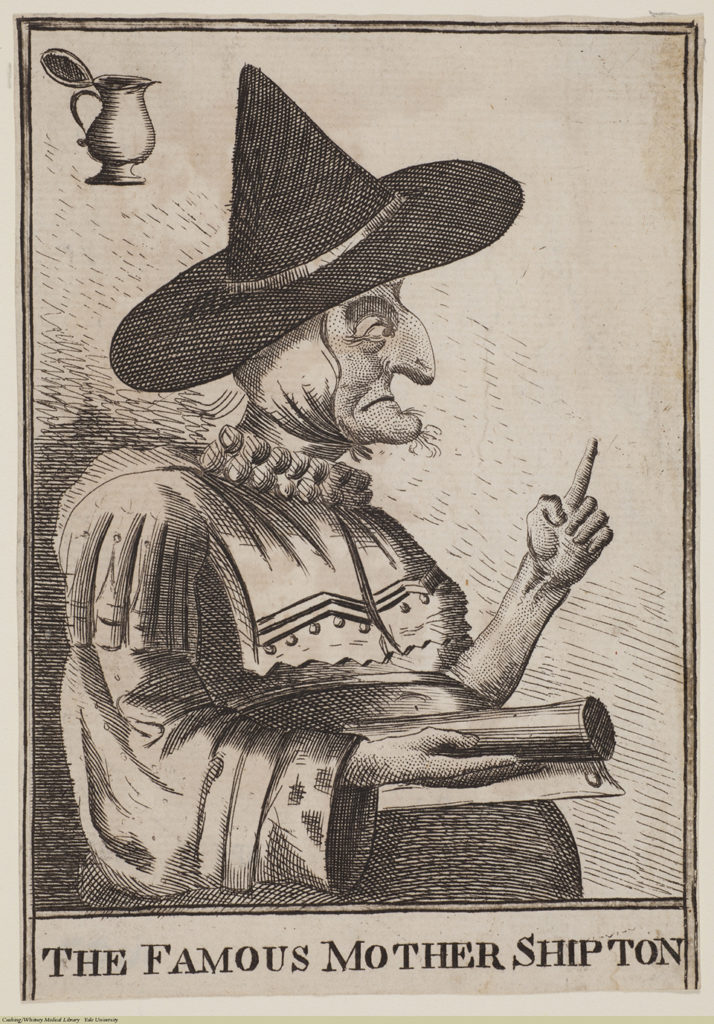
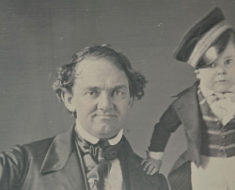
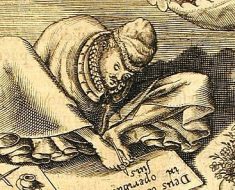
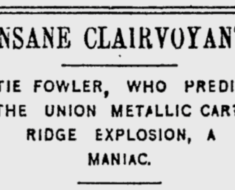
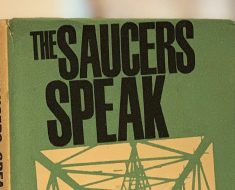
![Lady Wonder - By Francis Wickware (Dr. Rhine and ESP. Life Magazine. April. 15, 1940) [Public domain], via Wikimedia Commons](https://www.weirdhistorian.com/wp-content/uploads/2017/04/Lady_Wonder_Horse-By-Francis-Wickware-Dr.-Rhine-and-ESP.-Life-Magazine.-April.-15-1940-Public-domain-via-Wikimedia-Commons-235x190.png)
